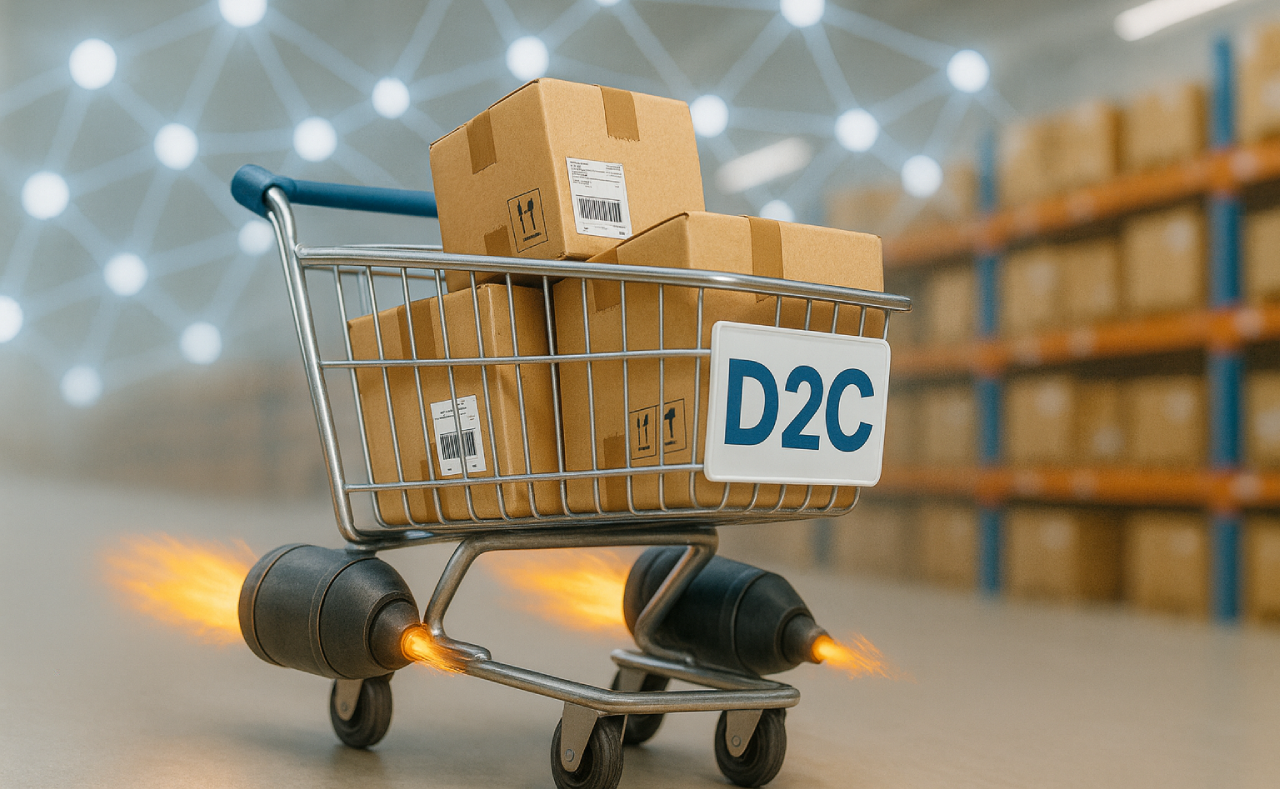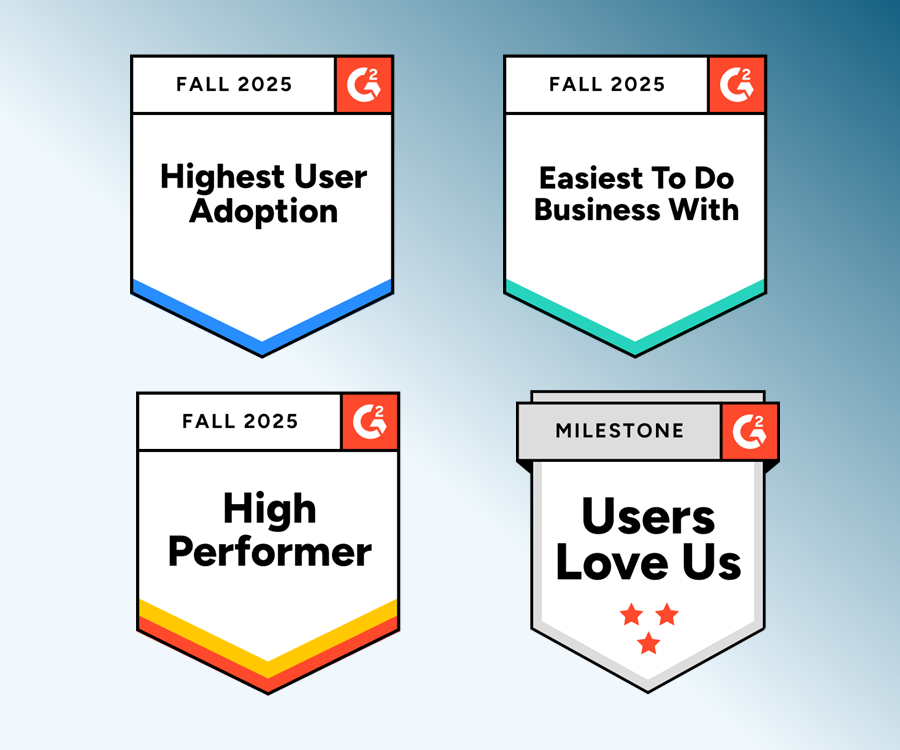A distribution network is the full system a company uses to move physical products from manufacturing to the end customer. That includes factories, ports, warehouses, distributors, fulfillment centers, transportation, retailers – and increasingly, ecommerce delivery direct to consumer (D2C).
For decades, distribution networks were built for a retail-first world. Products moved in bulk from factories to distribution centers, then to wholesalers or retail stores. The model focused on efficiency, pallet quantities, and lead-time predictability.
But the distribution network model is changing.
Many legacy brands are now adding D2C ecommerce to their channel mix. That’s forcing a rethink of how their distribution networks are structured. And their options are not good. Centralized fulfillment may not be fast enough. Traditional 3PLs may not be flexible enough. And building new warehouses everywhere is capital-intensive and slow.
What’s emerging is a hybrid model – one that blends existing distribution infrastructure with new capabilities designed for ecommerce. And in that model, distribution networks are being reinvented not just as wholesale and retail replenishment engines, but as a potential solution for fast, scalable D2C ecommerce fulfillment.
Let’s take a closer look.
What Is a Distribution Network?

A distribution network is the system a company uses to move products from where they’re made to where customers buy them. That includes:
- Manufacturing plants, suppliers, import hubs, and ports
- Central distribution centers and regional warehouses
- Distributors and wholesalers
- Retailers, marketplaces, and channel partners
- Fulfillment centers; fulfillment partners like 3PLs, Amazon FBA and Walmart WFS; and drop-ship nodes
- Transportation providers for inbound, outbound, and last-mile delivery
- Reverse logistics for returns, repairs, and recycling
A distribution network is important because it’s the way that manufacturers and brands get their products to stores and end customers. Operationally, the goal of the distribution network is simple: get the right product, to the right place, at the right time, for the right cost. In practice, a distribution network also must balance service level, coverage, inventory investment, operating cost, and risk.
What Is a Distributor Network?
Distributor networks are an important part of the overall distribution network. Distributor networks refer to the network of independent or semi-independent partners who purchase goods in bulk; stock regional inventory; and resell to local retailers, resellers, or wholesale customers.
While there are large, national distributors in many categories, many brands and manufacturers prefer – or are forced to – work with multiple independent, regional distributors for their products. They stitch these regional distributors together into a loose “network” to provide national wholesale and retail replenishment coverage. Distributor networks are common in the consumer packaged goods, industrial supplies, healthcare, automotive, and electronics markets.
Distributors have traditionally solved several challenges for manufacturers:
- Shortening lead times by positioning inventory near demand
- Managing regional retail sales and customer relationships
- Buying products in truckload or LTL quantities, then breaking them down to provide retailers, resellers, and other accounts the product in cases or other quantities they could afford to stock.
- Providing value-added services like merchandising, training, tech support, or credit terms
- Reducing financial risk by absorbing the cost of holding inventory and managing receivables
For decades, distributor networks were designed for retail replenishment. If your network could provide inventory to restock retail shelves and avoid stockouts, it was doing its job.
But ecommerce has changed everything.
The Rise of Direct-to-Consumer Ecommerce

Ecommerce has become a primary growth driver for many legacy brands. Initially, brands often get started by selling through general marketplaces like Amazon, Walmart, or specialized marketplaces such as Wayfair. Or they could sell to retailers like Home Depot or Best Buy or Target, which in turn offered the product on their website. The marketplace or retailer then fulfilled the customer’s order. It’s a good model, except:
- The marketplace or online retailer owns the customer, the customer data, and the customer experience – making it tough to build brand equity.
- The marketplace or online retailer often cherry-picks the brand’s product line – leaving many products without an online presence.
- The brand is at the whim of the marketplace or retailer – a risky proposition at best. During Covid, for example, Amazon abruptly cut off shipping some categories in favor of others that directly addressed the epidemic. Amazon, eBay, and other marketplaces are notorious for changing their seller and listing policies with little notice. High-profile marketplaces like Google and Wish abruptly disappeared after failing to compete with Amazon. And selling and storage fees for the remaining marketplaces continue to rise.
As a result, many manufacturers and brands are exploring and expanding their direct-to-consumer ecommerce fulfillment capabilities.
D2C ecommerce is projected to grow by 165% by 2034. Brands need a D2C fulfillment solution
Going direct gives brands:
- Higher margins
- Deeper customer relationships
- More customer data
- Greater control over brand experience
- Less reliance on marketplaces and other third-party sellers
As a result, US D2C ecommerce sales are projected to represent 19.2% of all retail sales in 2025. That’s a 24% growth rate between 2023 and 2025, with a 165% increase in ecommerce sales projected by 2034.
Manufacturers and brands can’t afford to ignore D2C ecommerce without losing sales and market share. But D2C selling calls for a different approach to sales and operations – with an eye towards increasing direct sales while avoiding channel conflict (and lost sales and support) from their traditional distributor, retail, and wholesale partners. As a result, many manufacturers now use a hybrid model, maintaining a mix of direct online sales and traditional marketplace and retail partnerships to reach a wider base of consumers.
How Distribution Networks Are Changing with D2C Ecommerce
Most legacy brands’ distribution networks were designed for wholesale replenishment. They move products in pallets and truckloads shipped to established, known warehouses and distribution centers.
But ecommerce introduces a new fulfillment logic: small, fast, and personalized parcels shipped to individual customers.
Brands going direct to consumer must now:
- Fulfill thousands of small parcel orders every day
- Meet 1- to 2-day delivery expectations nationwide
- Maintain high inventory accuracy and real-time visibility across all channels
- Handle returns and exchanges with minimal friction
This creates new challenges for distribution network design:
- Decentralization: Proximity to customers matters more than ever to increase delivery speed and cut shipping cost.
- Omnichannel coordination: Inventory must be shared and managed across D2C, retail, and marketplace channels.
- Speed and flexibility: Networks must scale up and down quickly and shift inventory in response to demand.
Distributor networks overcome the shortfalls of DIY, marketplace, 3PL, and other ecommerce fulfillment solutions
The options for meeting these challenges? Not good:
- A single, centralized warehouse can’t provide the 1-2 day delivery most consumers have come to expect – at least not without expensive expedited shipping.
- Building multiple new warehouses and distribution centers that are closer to the consumer is expensive, time-consuming, and risky.
- 3PLs can be useful for expanding 1-2 day coverage, but fees add up quickly – especially if extensive onboarding and sales channel integration is required.
But for many brands, the answer to quick, scalable, low-risk D2C growth may come from where they least expect it – their regional distributor networks.
Turning Distributor Networks into a D2C Fulfillment Engine
Regional distributors already have several advantages as part of a D2C-capable distribution network.

Distributors already have:
- Regional warehouses, located close to consumers, which cuts delivery time and expense
- Inventory on hand
- Workflows that translate easily into single-parcel ecommerce fulfillment
The problem?
Regional distributors are just that – they are regional. No single distributor offers the nationwide coverage needed for 1-2 day delivery. And while a brand’s distributor “network” – when viewed as a whole – could provide national coverage, there is no way for the brand to manage these independent businesses as a true, integrated network.
Until now.
The Distribution Network: A New Model for a New Era
Built by Etail Solutions, The Distribution Network (TDN) helps brands scale nationwide D2C fulfillment by activating their existing network of regional distributors. Instead of building out new fulfillment infrastructure, brands tap into the capacity that already exists.
TDN provides the ecommerce fulfillment tools brands need to manage their regional distributors as a D2C fulfillment network. And not all of a brand’s distributors need to participate. Multiple industry studies have shown that, depending on the product, 2-4 distributor locations can provide 1-2 day delivery nationwide.
The Distribution Network transforms independent regional distributors into a true, integrated D2C ecommerce fulfillment network
Here’s how it works.
The biggest barrier to scaling regional distributors to a nationwide fulfillment network isn’t warehouse space. It’s lack of integration.
To unlock the value of their distributor network, brands need:
- Real-time inventory visibility across every distributor location
- Intelligent order routing based on cost, speed, and availability
- Unified order and customer data
- Tight integrations between the distributors and the brand’s ecommerce platforms and marketplaces
Regional distributors are independent businesses focused on retail and wholesale accounts. They are not integrated with their brand partners’ online sales channels, or order and inventory management systems. They also have their own legacy systems for warehouse and workflow management.
The Distribution Network platform integrates brands with their regional distributors. TDN tracks inventory, then routes orders to the stocking distributors that can meet the customer’s delivery expectations at the lowest delivered cost. And, because TDN is built on Etail Solutions’ powerful integration engine, data flows through the system without the need for brands and distributors to integrate directly. It just works.; unifying independent distributors into a unified ecommerce fulfillment network.
A Win-Win for Manufacturers and Distributors
The Distribution Network drives ecommerce growth from brands and distributors without costly risks. Distributors get new revenue streams. Brands get faster, cheaper fulfillment. Customers get the 1-2 day delivery experience they’ve come to expect.
For brands & manufacturers
- Eliminate costly investments in warehouses, staff, or 3PLs
- Lower shipping costs by fulfilling closer to the customer
- Support drop shipping for retail accounts
- Maintain control over branding and customer experience
- Avoid channel conflict – work with distributors to protect retail relationships
Learn more about The Distribution Network for brands.
For distributors
- Create a new revenue stream by fulfilling ecommerce orders
- Improve inventory turns and ROI by moving stock faster
- Boost warehouse and employee utilization without major new investments
- Get up and running fast – leverage current workflows and systems
- Strengthen long-term partnerships with the brands they serve
Learn more about The Distribution Network for distributors.
Final Take: Transforming a Distributor Network into a Competitive Advantage
The ecommerce world moves fast. Brands that win don’t just have great products – they have great operations.
If you’re struggling to scale D2C, you don’t need to build a nationwide warehouse network. You may already have one. You just need to activate it.
Your distributor network can go from being a legacy structure to a modern fulfillment engine. But it requires the right tools, data, and strategy to bring it to life.
This is the future of distribution. And the smartest brands are already on board.
Distribution Network FAQs
What is a distribution network in a supply chain?
A distribution network is the system of facilities, partners, and workflows that move products from manufacturing to the end customer, including warehouses and distribution centers, distributors, retailers, fulfillment centers, and carriers.
What is a distributor network?
A distributor network is a brand’s set of distributors and wholesalers who buy, hold, and resell their products, often providing local service, compliance handling, and credit terms.
What is the difference between a distribution network and a distributor network?
The distribution network is the entire system. The distributor network is one route within that system. Brands use both together.
How has ecommerce changed distribution networks?
Ecommerce growth shifted consumer sales from traditional retail outlets to marketplaces and other online retailers. That’s reduced sales through distributors to traditional retailers; if they don’t sell the product, there is no need to replenish it. But, for most legacy brands, sales through traditional brick-and-mortar retail are still a huge part of their business. They can’t afford to walk away from their distributors and the retail and wholesale accounts they serve.
Do brands still need distributors?
Yes. But smart brands are realizing they can leverage regional distributors for ecommerce fulfillment. That helps distributors offset losses from marketplace and online retail ecommerce sales while also helping brands cement their relationship with their regional distributors. Plus, leveraging regional distributors often results in lower ecommerce fulfillment costs.
How many nodes are needed for fast delivery?
Most brands achieve strong coverage with three to five regional nodes, but it depends on SKU mix, weight, target service level, and where product demand sits. Start with modeling and a regional pilot.
Additional resources
PLATFORM OVERVIEWS
The Distribution Network for Brands
The Distribution Network for Distributors
SAVINGS CALCULATOR
D2C Fulfillment Savings Calculator Calculate your savings with a nationwide D2C fulfillment network
BLOG POSTS
Distribution Inventory Management for D2C Brands: A Complete Guide
Smarter Distribution Inventory Management Drives Ecommerce Growth
Distributed Fulfillment: Complete Guide
Rethinking D2C Ecommerce Fulfillment: Smarter Options for Brands
The Next Generation of Distributed Inventory Management




